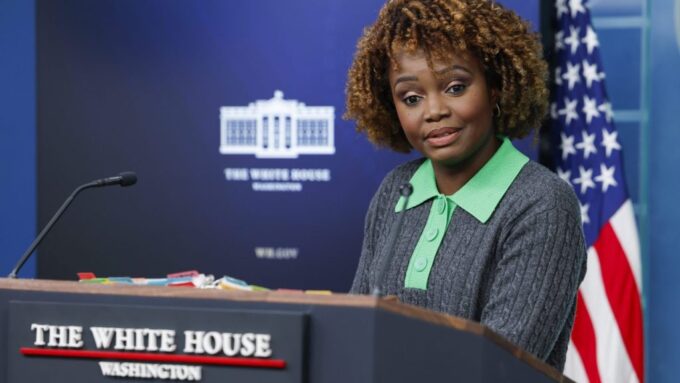Alice Dunnigan and Ethel L. Payne, first Black female White House reporters, honored with eponymous lectern
The names of the first Black female White House reporters live on inside the presidential headquarters because of a woman grateful for their efforts.
According to The New York Times, in November, White House press secretary Karine Jean-Pierre, the first Black woman to hold the position, designated a new lectern in the briefing room for Alice Dunnigan and Ethel Payne.
Dunnigan became the first Black woman credentialed to join the White House press corps while working for the Associated Negro Press in 1948, and Payne joined her a few years later for The Chicago Defender.
The White House Correspondents’ Association established a lifetime achievement award for the two women in 2022, inspiring the designation of the press lectern.
“The White House lectern is a powerful symbol of freedom and democracy beamed around the world on a regular basis,” said Jean-Pierre. “I can’t think of two better people to be associated with that symbol than Alice and Ethel.”
The briefing room lectern, which serves as the focal point of a private space for a privileged few, has evolved throughout time into a cultural and political relic. Martha Joynt Kumar, a presidency scholar with decades of experience documenting the interaction between the press and the White House, called the Dunnigan-Payne lectern an uncommon display of unity between the press corps and the White House.
Politics
Kumar noted that the Dunnigan-Payne podium joins others of importance, including Toast, used for glasses raised in unison at state dinners, and Blue Goose, used for formal presidential speeches.
April Ryan, theGrio’s senior White House correspondent, the Washington bureau chief and the longest-serving Black woman in the White House press corps, hailed the decision to celebrate Dunnigan and Ryan as particularly poignant, saying honoring them made her feel “seen.”
During their years of service in Black media, White House officials chastised both women, and President Dwight D. Eisenhower ignored the two, flustered over their queries concerning civil rights.
Similarly, The Times noted, former President Donald Trump and conservative media have targeted Ryan for making direct inquiries voicing Black Americans’ concerns.
“There are still crescendo moments in Black America, and we are the only ones who are asking those questions,” said Ryan, “or writing those stories, and asking Black questions that no one else dares, or wants, or thinks are important enough to ask.”
Never miss a beat: Get our daily stories straight to your inbox with theGrio’s newsletter.
Source link
In November, White House press secretary Karine Jean-Pierre designated a new lectern in the briefing room for Alice Dunnigan and Ethel Payne, the first Black female White House reporters. This move came after the White House Correspondents’ Association established a lifetime achievement award for the two women as they inspired the designation of the press lectern. This lectern, a symbol of freedom and democracy, has become a cultural and political relic. Martha Joynt Kumar, a presidency scholar, noted that the Dunnigan-Payne lectern is a rare display of unity between the press corps and the White House. April Ryan, theGrio’s senior White House correspondent, commended the decision to honor Dunnigan and Payne, as it made her feel “seen” as a Black woman in the press corps. During their time, both Dunnigan and Payne were chastised by White House officials, and President Dwight D. Eisenhower ignored them. Similarly, Ryan has faced criticism for making direct inquiries voicing Black Americans’ concerns. This recognition of Dunnigan and Payne highlights the historic significance of Black women in the press corps, as they were often the only ones asking important questions concerning civil rights.





